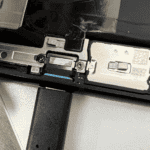CPU coolers play a crucial role in keeping your computer’s brain cool. They prevent overheating and ensure smooth performance. But how can you tell if your CPU cooler isn’t doing its job?
A bad CPU cooler often leads to high temperatures, system crashes, and unexpected shutdowns. If you notice your computer running hot or turning off without warning, it’s time to check your cooler. Regular maintenance can help prevent these issues.
You can test your CPU cooler’s performance easily. Monitor your CPU temperature using built-in tools or third-party software. Compare the readings to your CPU’s normal operating range. If temperatures stay high even when your computer isn’t working hard, your cooler might be failing.
| Sign | Potential Issue |
|---|---|
| High CPU temps | Cooler not working |
| Frequent crashes | Overheating |
| Loud fan noise | Failing cooler |
| Poor performance | Thermal throttling |
Identifying Symptoms of a Failing CPU Cooler
A failing CPU cooler can lead to various issues that affect your computer’s performance and longevity. Recognizing these symptoms early can help prevent severe damage to your system.
Increased CPU Temperatures and Overheating Issues
High CPU temperatures are a key indicator of a faulty CPU cooler. Use monitoring software to check your CPU’s temperature regularly. Normal idle temperatures range from 30-40°C, while under load they should stay below 80°C.
If you notice temperatures consistently above these ranges, your cooler may be failing. Overheating can cause your CPU to throttle its performance to protect itself. This results in slower processing speeds and reduced overall system performance.
To test your cooler, run a stress test and monitor the temperatures. If they spike quickly or remain high after the test, your cooler might be struggling to dissipate heat effectively.
Unusual Fan Noise and Inconsistent Fan Speed
Listen for any strange noises coming from your CPU cooler fan. Grinding, rattling, or buzzing sounds often indicate worn bearings or other mechanical issues.
Check the airflow from your fan. Weak or no airflow suggests a problem with the fan motor or an obstruction. Monitor fan RPMs using software tools. Inconsistent speeds or sudden drops in RPMs can signal a failing cooler.
Fan speed should increase as CPU temperature rises. If it remains constant despite temperature changes, the fan controller might be malfunctioning.
System Instability and Frequent Crashes
A failing CPU cooler can lead to system instability and crashes. You may experience frequent Blue Screen of Death errors, random restarts, or sudden shutdowns.
These issues occur because overheating can cause the CPU to malfunction or trigger protective measures. Your system might become unstable during resource-intensive tasks or when overclocking.
If you’ve recently overclocked your CPU and notice stability issues, inadequate cooling could be the culprit. Try reverting to stock settings to see if the problems persist.
| Symptom | Possible Cause | Action |
|---|---|---|
| High temperatures | Poor heat dissipation | Check thermal paste, clean dust |
| Unusual noise | Worn bearings | Consider fan replacement |
| System crashes | Overheating protection | Monitor temps, stress test CPU |
Monitoring and Diagnosing CPU Cooler Issues
Effective monitoring and diagnosis of CPU cooler problems is crucial for maintaining optimal system performance. Regular checks and proper interpretation of data can help you identify and address cooling issues early.
Software Tools for Temperature and Performance Monitoring
Several software tools can help you monitor CPU temperatures and performance. HWMonitor, SpeedFan, and Open Hardware Monitor are popular choices. These programs provide real-time data on CPU temperatures, fan speeds, and other system metrics.
MSI Afterburner, while primarily used for GPU overclocking, also offers CPU monitoring features. For a quick check, you can use Windows Task Manager to view CPU usage and basic temperature information.
CPU-Z is another useful tool that provides detailed information about your processor, including its clock speed and voltage.
To use these tools effectively:
- Install your preferred monitoring software
- Run the program while performing various tasks
- Keep an eye on temperature fluctuations
- Note any unusual spikes or consistently high temperatures
| Software Tool | Key Features |
|---|---|
| HWMonitor | Comprehensive system monitoring |
| SpeedFan | Fan speed control and temperature monitoring |
| MSI Afterburner | GPU and CPU performance monitoring |
| CPU-Z | Detailed CPU information |
Interpreting BIOS/UEFI Settings and Readings
Your computer’s BIOS or UEFI provides valuable information about CPU temperatures and fan speeds. To access these settings:
- Restart your computer
- Press the designated key (often F2 or Del) during startup
- Navigate to the hardware monitoring section
In the BIOS/UEFI, you can check current CPU temperatures and fan speeds. Many modern systems allow you to set custom fan curves for optimal cooling performance.
Pay attention to the CPU fan speed. If it’s consistently running at maximum speed, it could indicate a cooling problem. Some BIOS versions also include temperature threshold settings. You can adjust these to ensure your system responds appropriately to temperature changes.
Remember to save any changes before exiting the BIOS/UEFI. Regular checks of these settings can help you catch potential cooling issues before they cause system crashes or performance problems.
Physical Inspection and Maintenance
Regular maintenance and inspection of your CPU cooler are crucial for optimal performance. These tasks help prevent overheating and extend the lifespan of your computer components.
Cleaning and Reapplying Thermal Paste
Dust buildup on your CPU cooler can reduce its efficiency. Clean the heat sink and fan blades every few months. Use compressed air to blow away dust particles. Be gentle to avoid damaging delicate components.
Thermal paste degrades over time. Replace it every 2-3 years for best results. To reapply:
- Remove the old paste with isopropyl alcohol
- Apply a pea-sized dot of new paste to the CPU
- Carefully reseat the cooler
Choose high-quality thermal paste for better heat transfer. This simple step can significantly improve cooling performance.
Checking for Physical Damage and Obstructions
Inspect your CPU cooler for visible damage. Look for:
- Bent or missing fins on the heat sink
- Cracked or loose heat pipes
- Wobbling or noisy fans
Clear any obstructions around the cooler. Ensure proper airflow by managing cables and removing nearby components that block air circulation.
Test fan operation. If it’s not spinning or makes unusual noises, it may need replacement. A malfunctioning fan can lead to inadequate cooling and potential system damage.
Water Cooling Specifics: Leaks and Coolant Levels
For liquid cooling systems, extra care is needed:
- Check for leaks regularly
- Monitor coolant levels monthly
- Inspect tubes for kinks or damage
Top up coolant if levels are low. Use distilled water or manufacturer-recommended fluid.
| Maintenance Task | Frequency | Importance |
|---|---|---|
| Dust cleaning | 3-6 months | High |
| Thermal paste | 2-3 years | High |
| Leak check | Monthly | Critical |
Replace tubes if you notice any cracks or discoloration. Leaks can cause severe damage to your computer components.
Understanding Cooler Types and Their Implications on CPU Performance
CPU coolers play a crucial role in maintaining optimal processor temperatures. The choice between air and liquid cooling systems can significantly impact performance and overclocking potential.
Air Coolers vs. Liquid Coolers: Efficiency and Suitability
Air coolers use heatsinks and fans to dissipate heat. They are generally more affordable and easier to install. Air coolers work well for most standard computing tasks and moderate gaming.
Liquid coolers, on the other hand, use a coolant to absorb and transfer heat away from the CPU. They often provide better cooling efficiency, especially for high-performance systems. Liquid cooling is particularly beneficial for resource-intensive tasks like video editing and gaming.
| Cooler Type | Cost | Efficiency | Maintenance |
|---|---|---|---|
| Air | Low | Good | Minimal |
| Liquid | High | Excellent | Periodic |
Impact of Cooler Choice on Overclocking Potential
Your cooler choice directly affects overclocking capabilities. Air coolers can support moderate overclocking but may struggle with high-end processors under extreme loads.
Liquid coolers excel in overclocking scenarios. They can handle higher heat loads, allowing for more aggressive CPU overclocking. This improved thermal management often results in better stability and performance gains.
When pushing your CPU beyond stock speeds, proper thermal paste application and fan control software become crucial. These elements help maximize cooling efficiency and maintain safe temperatures during overclocking.
Frequently Asked Questions
CPU cooler issues can significantly impact your computer’s performance and longevity. Understanding how to identify and address these problems is crucial for maintaining optimal system health.
What are the signs of a failing CPU cooler?
High CPU temperatures are a key indicator of a failing cooler. You may notice your computer slowing down or shutting off unexpectedly.
Strange noises like grinding or clicking from the cooler area can signal problems. These sounds often mean the fan bearings are wearing out.
What methods can be used to test the functionality of a CPU cooler?
You can use monitoring software to check CPU temperatures under different loads. Run stress tests to see how well the cooler performs.
Visually inspect the cooler for damage or dust buildup. Ensure the fan spins freely and quietly when your computer is running.
How can one assess the performance of a liquid CPU cooler?
Check that the pump is running by feeling for vibrations. Listen for the sound of liquid flowing through the tubes.
Monitor temperatures to ensure they remain stable under load. Inspect the radiator and tubes for any signs of leaks or corrosion.
What steps should be taken to ensure a CPU cooler is mounted correctly?
Clean the CPU surface and apply thermal paste evenly. Align the cooler correctly on the CPU.
Tighten mounting screws in a cross-pattern to ensure even pressure. Don’t overtighten, as this can damage components.
Is there a typical lifespan for a CPU air cooler?
Air coolers can last 5-8 years with proper maintenance. Regular cleaning can extend their lifespan.
Fan bearings eventually wear out. High-quality coolers often last longer than budget options.
How can one determine the need for a CPU cooler replacement?
Rising temperatures despite cleaning and reapplying thermal paste suggest replacement. Unusual noises or visible damage are clear signs.
Upgrading to a more powerful CPU may require a better cooler. If your current cooler can’t keep up, it’s time for an upgrade.
| Symptom | Possible Cause | Action |
|---|---|---|
| High temps | Poor cooling | Clean/replace |
| Noise | Worn bearings | Replace fan |
| Leaks | Damaged liquid cooler | Replace immediately |
| Unstable temps | Mounting issues | Reseat cooler |
| Slow performance | Thermal throttling | Upgrade cooler |






